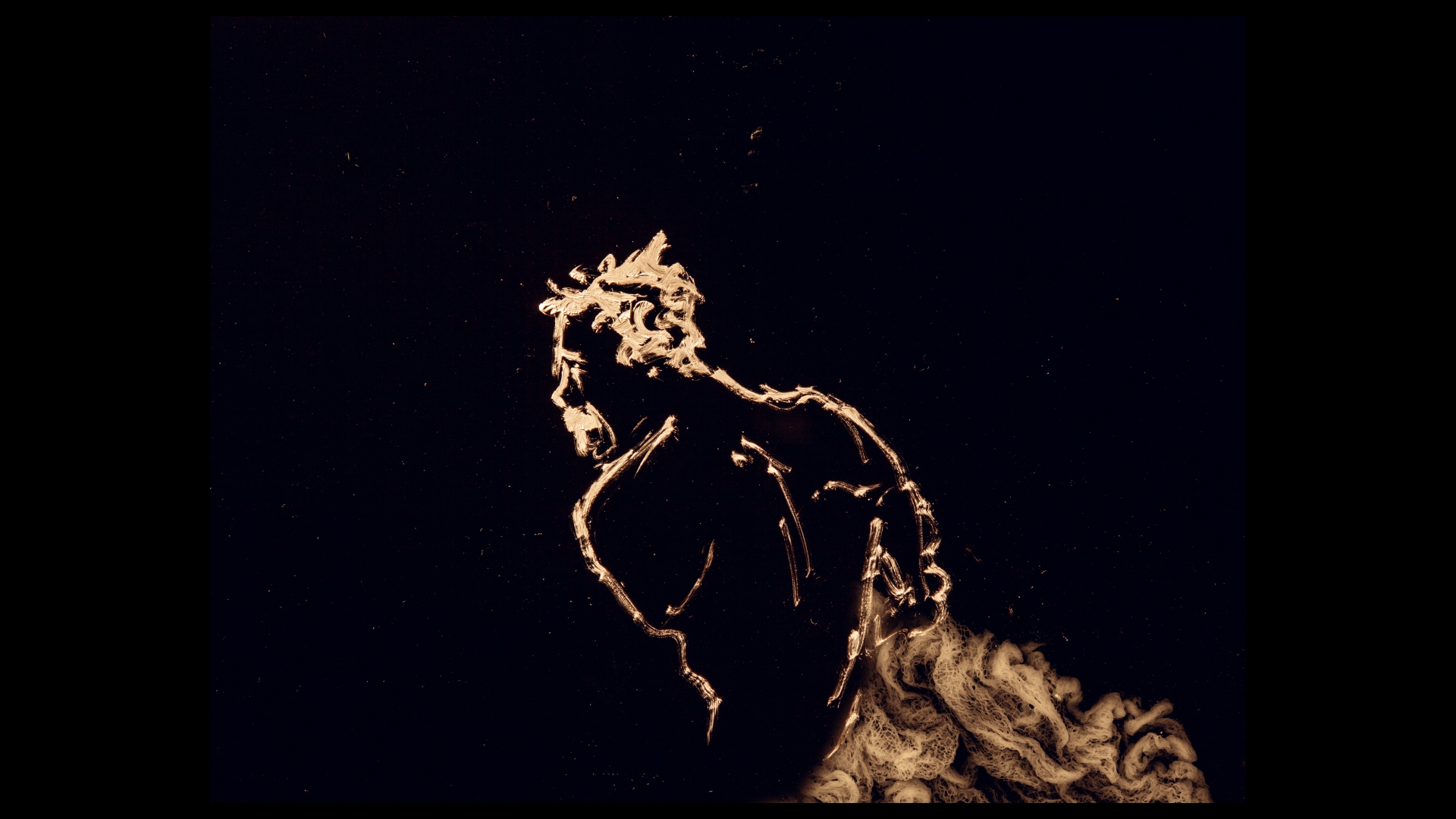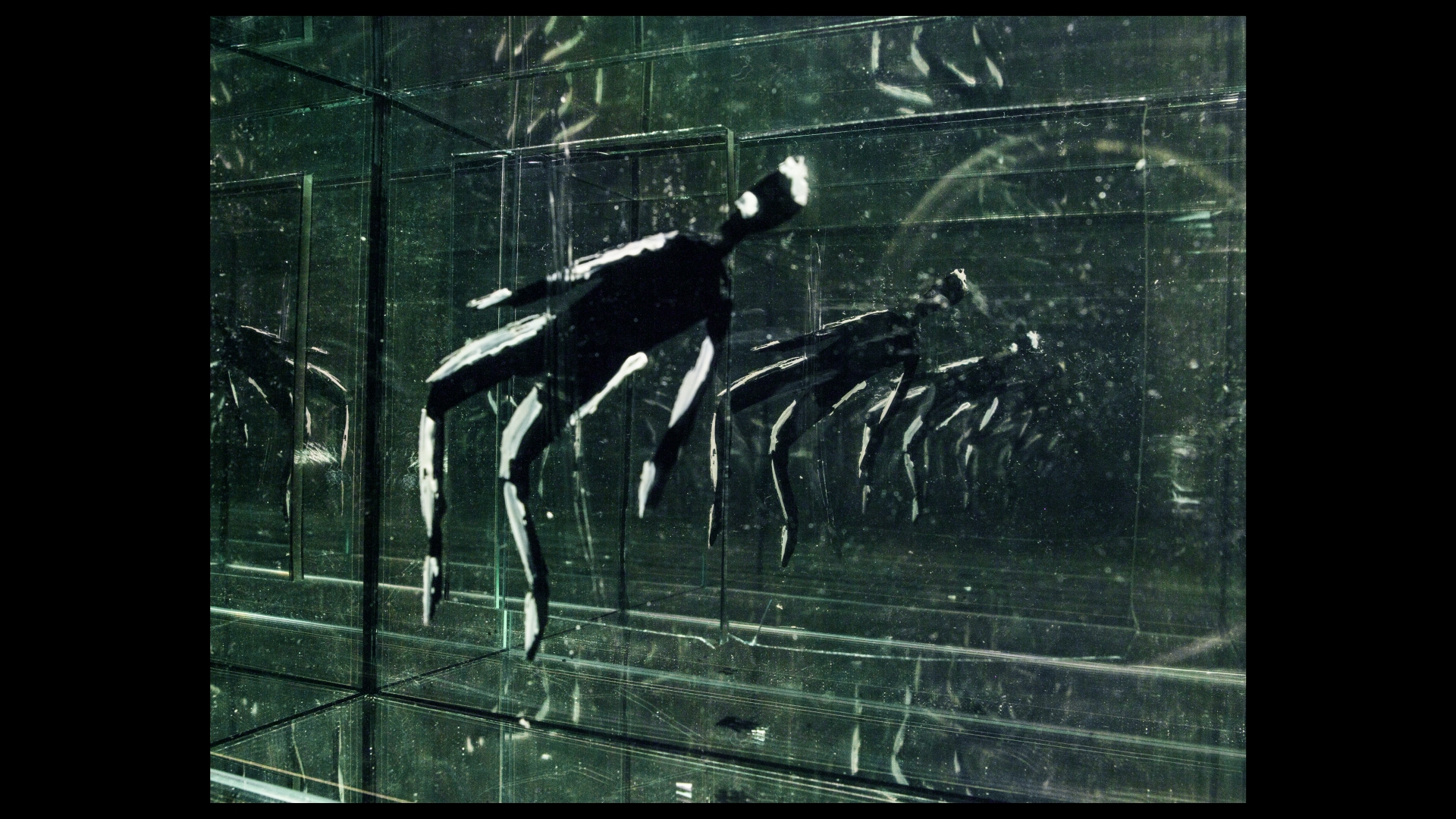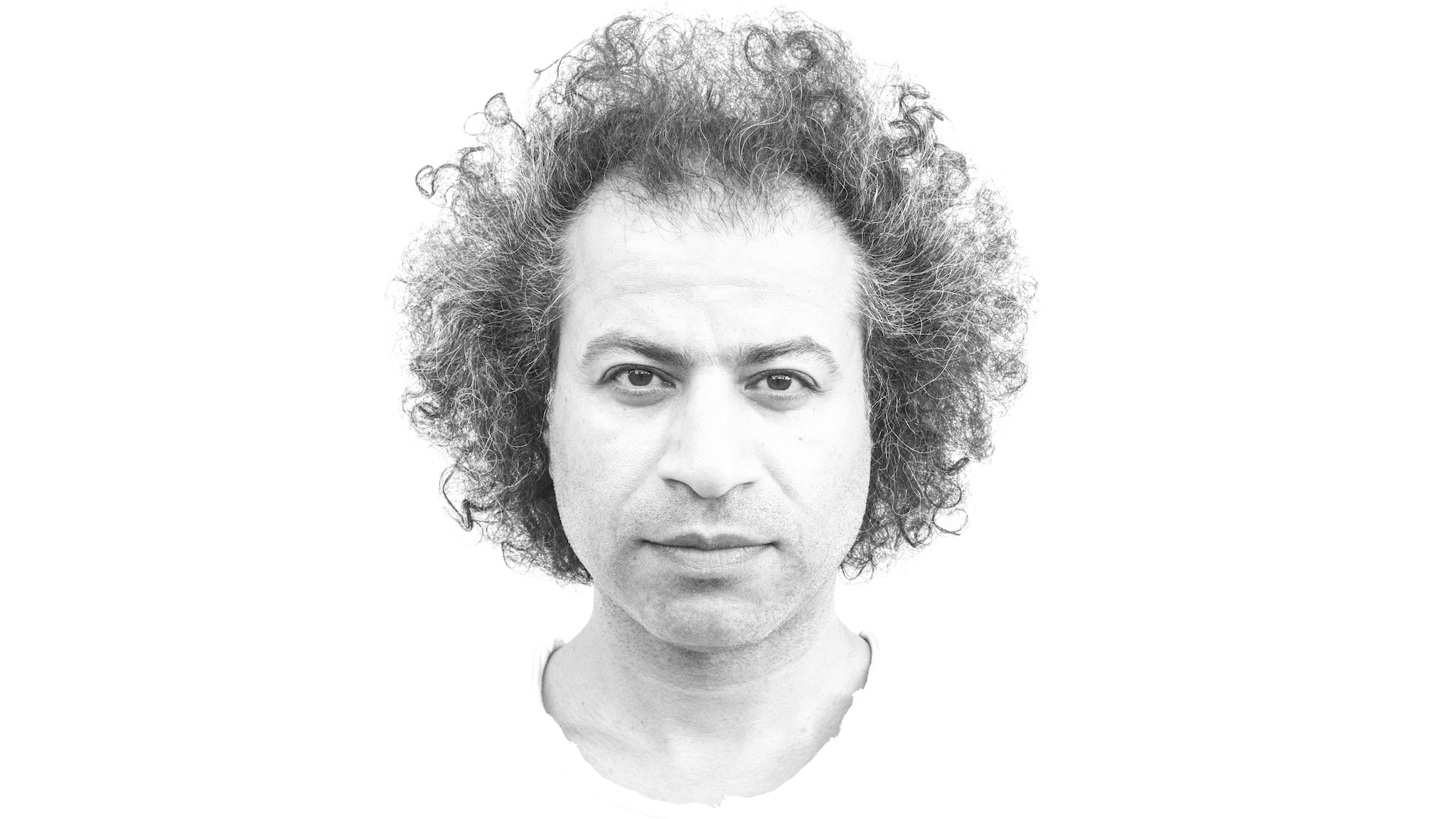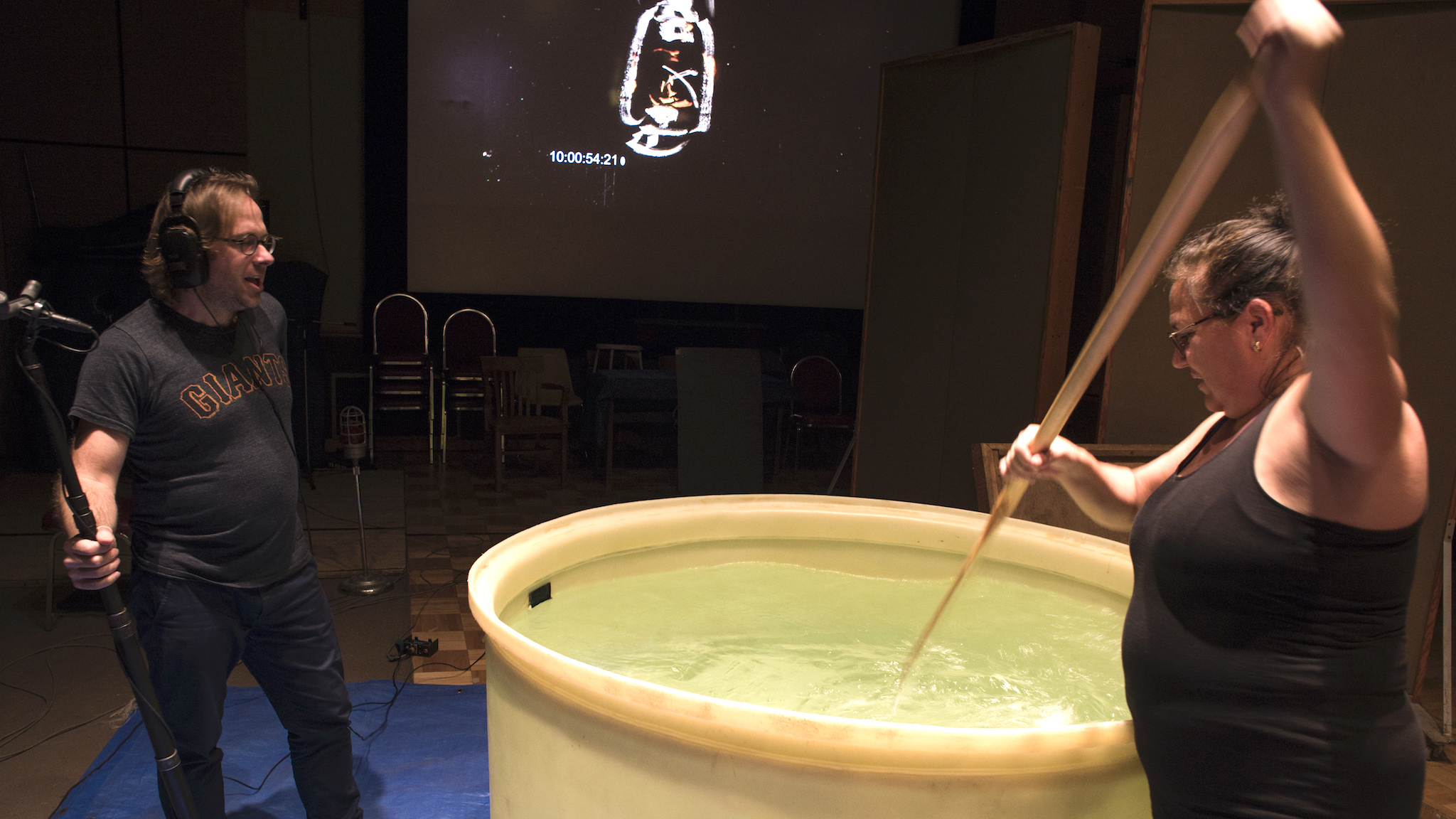Dale Hayward and Sylvie Trouvé were thinking of putting a guest bedroom in their basement — but Baba Yaga had other ideas. And what Baba wants, Baba gets.
Bowing to her formidable powers, they found themselves transforming their basement into an animation set, a miniature studio where the mythic Slavic matriarch assumed a starring role in Bone Mother, awesome stop-motion now available online.
oehttps://https://ift.tt/2yDn7IX
Together Hayward and Trouvé have amassed years of experience in commercial and independent animation — making ads for Nike and other major brands, animating TV series and features like Little Prince, and running their own company See Creature — but Bone Mother presented a whole new set of challenges and opportunities.
They sat me down at the kitchen table of the Montreal home they share with their two kids and told me how it all went down — a tale of vampires and newborns, a thousand 3D-printed heads and an enduring shared passion for stop motion.
Co-directed by Hayward and Trouvé, Bone Mother was produced by Jelena Popović and executive produced by Michael Fukushima for the NFB Animation Studio.
How did you guys get together?
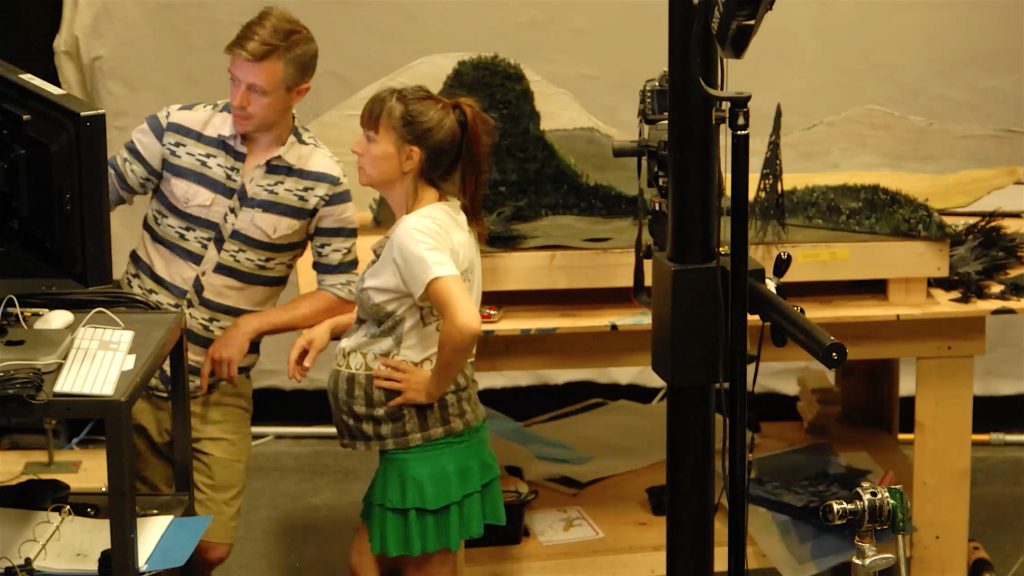
Sylvie: We were both working at Cuppa Coffee Studios in Toronto, animating TV series. We’d see each other in passing, and then at one point I became his animation director and had to talk to him. No choice! We ended up getting together, something we tried to keep a secret for a year or so, which was kind of fun. Then Hothouse came along; a 3-month apprenticeship program for emerging Canadian filmmakers with the NFB’s English animation studio in Montreal. We realized that we loved filmmaking and Montréal so we decided to stay.
Dale: Moving was a whole process of re-adjustment. We’d just finished working in Toronto, where we’d been working on Celebrity Deathmatch, a MTV gorefest that got made on a crazy schedule. 16 episodes in three months. And at the same time I’d been doing tests for my hothouse film. So I was pretty pumped when I arrived at the NFB that first day, but I quickly realized that the Film Board runs at another pace.
Which edition of Hothouse was that?
Dale: It was 2007, so Hothouse 4. My film was Roy G Biv — totally abstract, working with paints. Sylvie did her own Hothouse film the following year.
Sylvie: Mine was called Orange, an abstract look at urban spaces. That film led me to working with the French animation studio, where I made another film called Reflection. My background is in photography; it was natural and exciting for me to combine animation with photography.
What was the appeal of Baba Yaga?
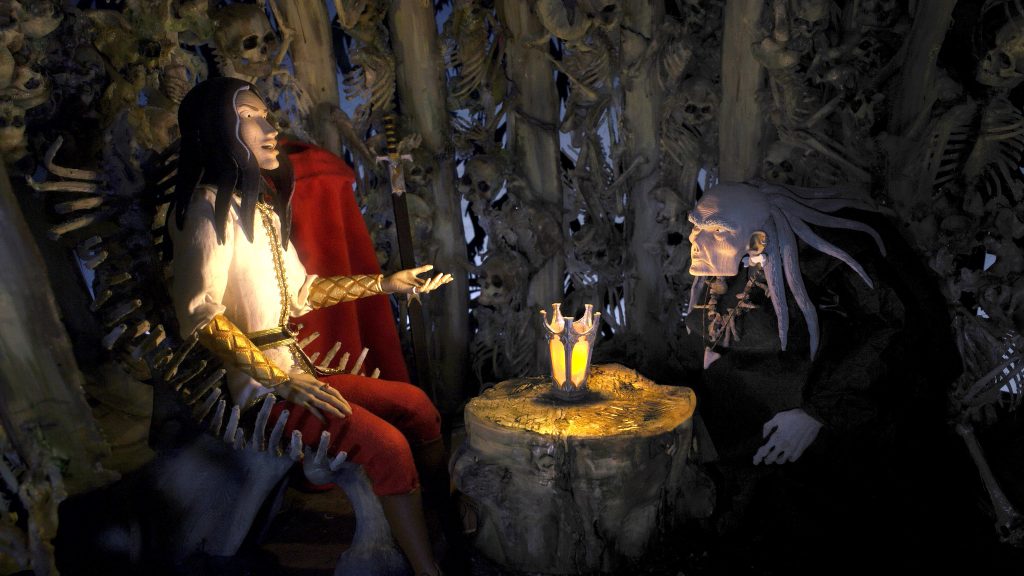
Dale: We’ve always liked anti-heroes and fantasy stories. I first heard Maura McHugh’s version of the Baba story on the horror podcast Pseudopod. Baba is usually portrayed as a dark character, an evil witch. But there are lessons to be learned from characters like that. She’s like that old uncle who terrifies you, but who you totally respect at the same time. It seems natural somehow that Vlad the Impaler has the audacity to walk through her door. It was fun to have a story with two villains. It gave us lots to play with.
Sylvie: For me it was the fact that she’s a woman in this world. So many mythic villains are men — Dracula, Frankenstein, and all those guys. And then there’s Baba Yaga. She’s not your typical witch. She commands respect. She meditates. I liked the idea of paying homage to powerful old ladies. Just because you’re getting old doesn’t mean you’re getting weak. And I like that she’s Dracula’s mother. We don’t think of Dracula having a mother.
Dale: Vampires are big in pop culture right now, and initially we thought it might be too commercial for the Film Board. This is not typical NFB animation. But we pitched it anyway and they went with it. Baba is the main character, but I think it’s nice bonus for audiences to learn that it’s also Dracula’s origin story.
How did end up you making the film in your basement?
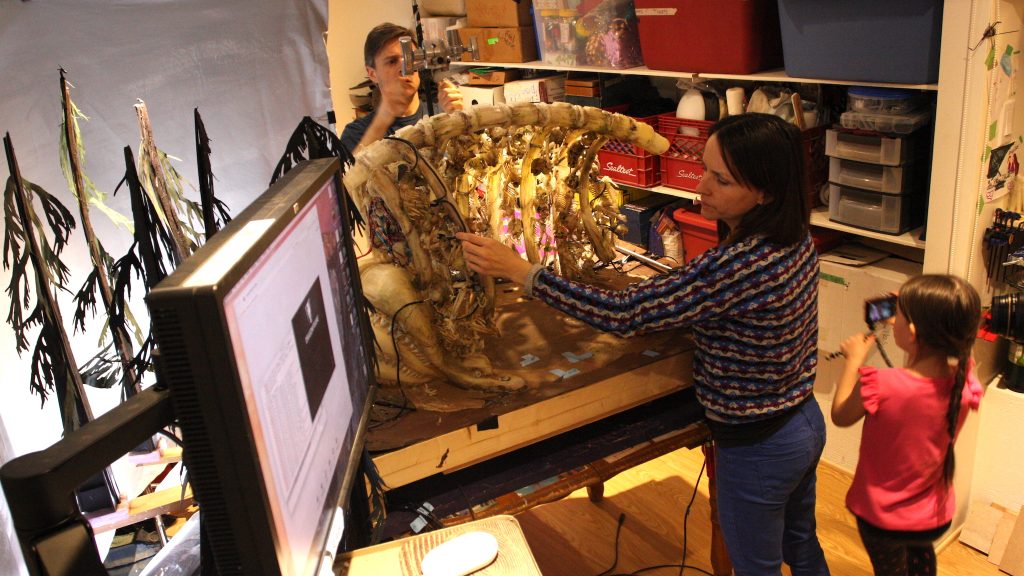
Sylvie: That was our producer Jelena Popović’s idea. I was pregnant with Rémi at the time, and initially we thought we’d have the baby and then go back to the Film Board, with baby in tow, thinking, you know, that people love babies and it would be fine. But we already had a daughter and should’ve remembered that it’s not that easy. Then Jelena said, maybe you can do it at home. And the more we thought about it, the more it made sense. We thought we’d eventually go back to the Film Board, to get shots that needed more space, but once we set things up here, we realized that we could adapt and shoot pretty much everything here.
Dale: It was the only way to get it done. As tough as it was to go back and forth between filming and diapers, it allowed me to be with Rémi during his first months. He could be on set with us, and our daughter Zoé was able to get involved in the production. She liked bringing her friends over to show them the bone house and the skeletons. And we could be totally flexible with the schedule. I would set things up knowing that Sylvie would take over later, and vice versa.
Sylvie: I’m a morning person and Dale likes working at night, so he’d often work until midnight and then I’d start shooting at 5 am. It gave us a nice balance. When I had Zoé, I stayed home while Dale was out working, and I found that quite alienating. This time around it was different. And it’s nice to have an artistic project that gives you a break from baby life.
Did making it at home affect the look or feel of the film at all?
Sylvie: I don’t think so, but I laugh when I look at certain shots, knowing that I’m looking at a section of our basement ceiling or wall.
Dale: Yeah, I had to comp out the basement pot lights in some shots. But that’s what stop motion is all about, holding things up with post-it notes and duct tape, and making it all work. We used lots of simple materials – foam board, and blue, green and even pink screen that we found at the dollar store. It was essential to expanding the environment in postproduction, so you couldn’t tell it was shot in a small room.
Was 3D printing part of the plan from the get-go?
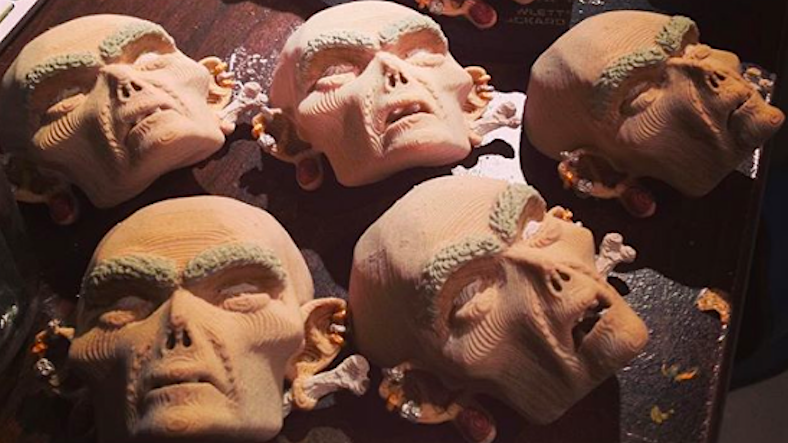
Dale: Yes, it was part of our original pitch. We knew the NFB was looking for innovation, and we’d been working with André Michaud on Little Prince, which used 3D printed faces. Stop motion is typically limited with the range of facial expression, and this was an opportunity to take it up a level, to try to create more expressive characters.
Sylvie: That’s where the 1500 faces come in. We wanted a full range of emotions in the characters – angry and mad, angry and sorrowful, and so on. We weren’t using high-end printers but in the end that kind of worked in our favour. We discovered the stepping in Baba’s face looked like wrinkles, an effect that worked well for her character, so we emphasized this as much as we could.
Dale: At the same time we wanted to keep a textured handcrafted look — to be able to see the thumbprints so to speak — so each face, each set of eyes, was painted individually. That took months to do and we were lucky to have Eve Lamoureux and Claire Brognez help us out. They were a great team. We also spent quite a bit of time researching 3D printing filaments until we finally found a part wood/part plastic blend that matched our environment and took well to watercolour paint.
In such a dark gothic story lighting is key.

Dale: The challenge was to keep it dark and have it look natural, not have that “day for night” look. Most of the interiors were lit with tiny LED lights, hot glued to armature wire. We wired them to jacks – and controlled them with DMX channels. In the original story Baba’s house speaks, and the LED lights became that voice. When they come on, you know the house is talking.
Sylvie: Fire is a major element too, and it’s Vlad who brings that into the story with his lamp. His technology invades Baba’s natural space.
Was there a clear division of labour?

Sylvie: I come from a photography so I focus on what’s under camera. Dale is better on the computer. I know my way around After Effects, Photoshop and other programs, but I’m not a tech person at heart, and he’s also better at rigging stuff. I like doing the sets and painting, thinking of the visual composition. He did the storyboard and designs. We both constantly worked on the story and the editing.
Dale: Experience has taught us to establish who’s responsible for what. Whenever we don’t, we get into trouble. But it’s still evolving, I’d say. When we look at the film now, we forget who did what shot. We were both so involved. Even if it was my hand animating the puppet, it was often her idea. People ask us, who makes the decisions? Well we both do.
Sylvie: It’s all about which idea works better and that’s a question of maturity I think. When you first start off, you think, “I made this and nobody is going to tell me otherwise.” But that attitude isn’t productive. We just listen to each other and see what works.
How did the soundtrack come together?
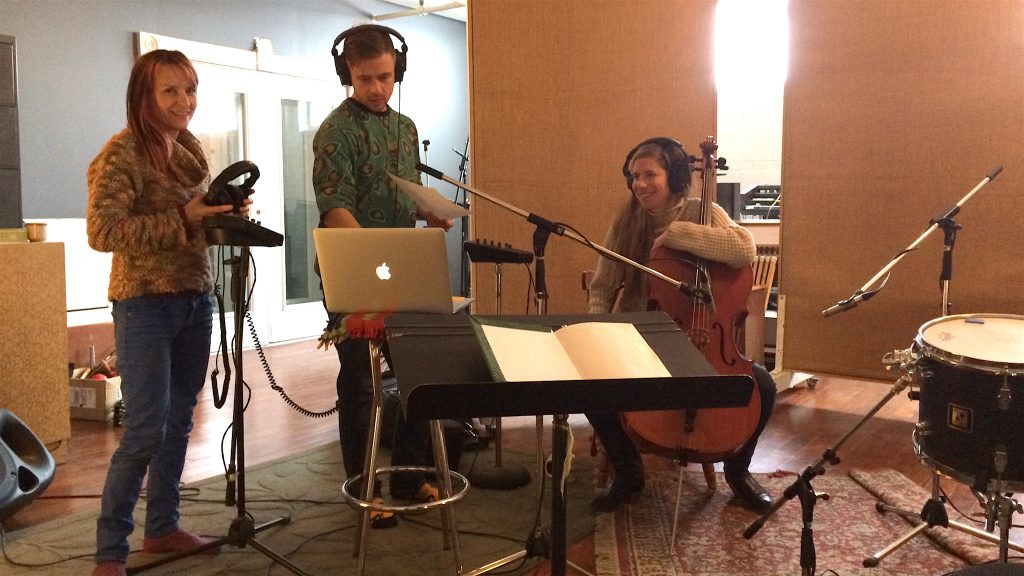
Above: Sylvie and Dale with composer Rebecca Foon.
Sylvie: Sacha Ratcliffe was the sound designer and she immediately got what we wanted — the house and its voice, the animal sounds, the atmosphere, everything. Her design brought everything to another level. And the NFB team was great: Geoff Mitchell, who did the recording; Karla Baumgardner, on Foley; Jean Paul Vialard, who did the mix. They all really know what they’re doing.
Dale: We had cut the film to temp music from Inception and other Hans Zimmer pieces, big momentous music, so we had a good sense of the music cues. Rebecca Foon created wonderfully atmospheric music. Recording the voices of Baba and Vlad was amazing. With Baba, we knew we wanted the rough voice an older actress, a smoker, Renée-Madeleine Le Guerrier was perfect. As soon as I heard her laugh, I knew she was Baba. And Rafael Petardi, with his deep voice like butter, was completely convincing at the vain Vlad.
Any other collaborators you want to mention?
Dale: André Michaud was a huge help with tech stuff, particularly all our 3D printing issues. We’d worked with him in Little Prince and he’s always open to trying prototypes but he knows when to say something wasn’t working.
Sylvie: Jelena Popović, our producer, really helped us get a handle on the story. She’s from Eastern Europe originally so she was familiar with the Baba legends. And Eve Lamoureux-Cyr and Claire Brognez painted all those faces, a job that took four months. Noncedo Khumalo handled the eyes and most of the Maya modelling.
Dale: Another key collaborator was Nick Fairhead, a old friend from Toronto. He’s a post-production guy who’s worked on lots of high-end features, and he really raised the production values.
Any influences? Art or artists who feed your imagination?
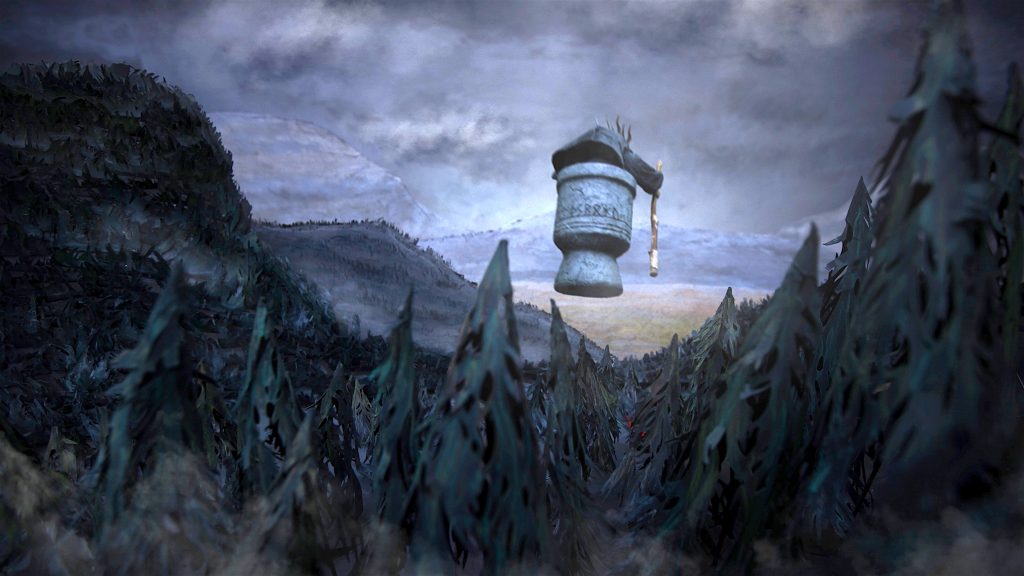
Dale: One influence on this particular film is the comic book artist Mike Mignola and his Hellboy character. He’s got an awesome style that took a while to become accepted in the mainstream. He’s now one of the industry’s most unique voices.
Sylvie: When it comes to animation, the people at Laika are totally inspiring. I love the work of Rachelle Lambden, one of the only women there. We worked together at Cuppa Coffee for a while. She’s a powerful character animator.
Dale: And we just finished working with Regina Pessoa in Portugal. It was really inspiring to see how she integrates work into her country life style, finding a balance between work and community. That’s something we try to apply to our own situation.
Sylvie: We both like live action too. I grew up watching horror movies with my mom – Amityville, The Thing, The Shining, all the Stephen King stuff.
What’s next?
Sylvie: Right now we’re shooting another stop motion film in our basement — a much simpler project directed by José Luis Saturno. And Dale is interested in delving into live action.
Dale: We both really enjoy live action, and I’d love to make a feature that integrates stop motion into live action somehow. Technology is evolving quickly, the lines are getting blurred, and that’s exciting.
Sylvie: Now that we’ve finished Bone Mother, we’re coming back to See Creature, pushing it in new ways. We’ve always enjoyed creating animated sequences for documentaries, and I also have a idea for a series of mini-shorts – focussing on little illuminating life moments. Likes lots of people, we’re looking for a balance and interested in working on projects that are meaningful to us.
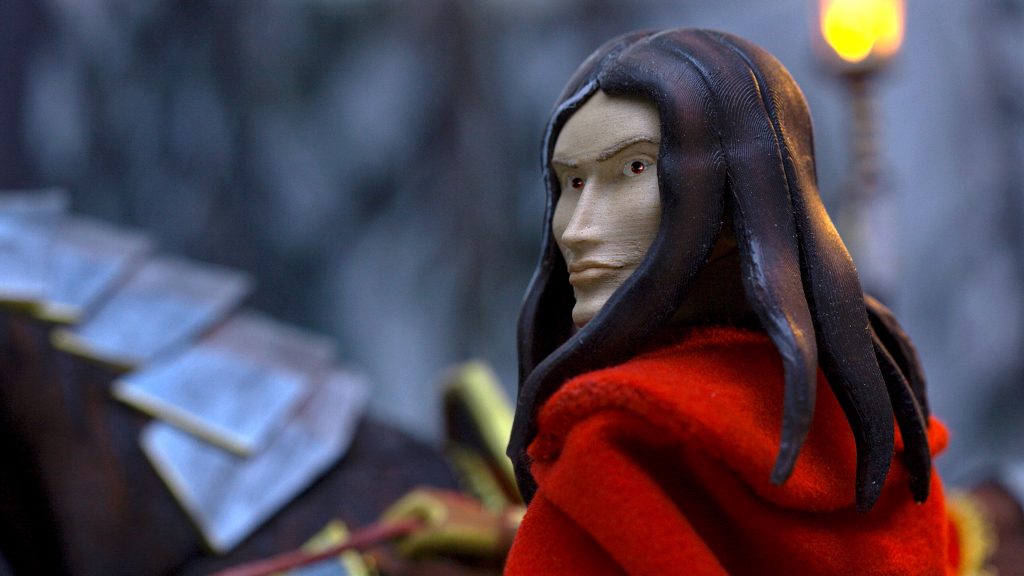
Artwork from Bone Mother will be exhibited at Toronto’s Liberty Arts Gallery, opening November 1 and on display a month, and Dale and Sylvie are giving a masterclass on the making of Bone Mother on Nov 4 at the 2018 edition of the TAAFI Conference in Toronto.
For more making-of photos, check out the Bone Mother instagram account.
The post Watch Bone Mother, Dale Hayward & Sylvie Trouvé’s gothic animation appeared first on NFB Blog.
Watch Bone Mother, Dale Hayward & Sylvie Trouvé’s gothic animation posted first on http://film-streamingsweb.blogspot.com










